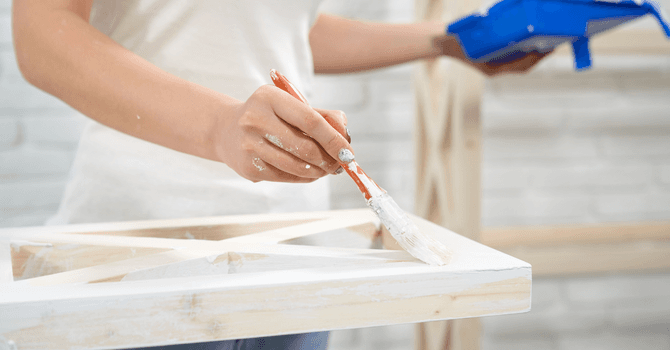Contractor: How to Pass a Safety Inspection
By Editorial Team
Updated on November 7, 2023

As a contractor working in the industry, you’ll understand the time, energy and dedication every aspect of the job requires. Regardless of your field, the health and safety of workers are of the utmost importance.
Of course, if you’re running your own contracting business or working on a job site, you’ll know that finding a balance between productivity, quality, and worker safety can be challenging. But, if you’ve got a safety inspection approaching, these aspects must be considered.
What can you expect from an industry safety inspection, and what do you need to do in order to take the best care of your workers? This article will cover everything to know when approaching a construction industry safety inspection.
Contractor: how to pass a safety inspection

Source: Pexels
What does a safety inspection entail?
When it comes to the inspection of a construction site, a few different things will be assessed. Inspectors will be checking different aspects and these can be broken down into the following two types:
Progress inspections:
A progress inspection is part of the job site's daily routine in order to ensure that specific requirements are met. These requirements should be laid out in a job site checklist, as this is an essential part of planning out a construction project.
The inspection itself will depend on the project size and will be conducted by one or more individuals from various trades. If there are special or specific aspects that require further inspection, specialist inspectors will be brought in to perform in areas such as environmental policy, accessibility, waste management and so on.
Quality inspections:
On another note, quality control inspections refer to a process that makes sure the finished construction work meets a set of specific quality standards that have been set in place. These inspections also make sure that the project meets specifications and quality requirements that are listed in original contract documents. These can include site walkthroughs, as well as a monthly report that works to monitor progress and identify any issues at hand.
Building regulation inspections
Next, we’ll look at the importance of building regulation compliance inspections. These inspections take place to ensure that the work being performed is up to code in terms of local building codes, rules and regulations. Again, the number and frequency of building regulation inspections will depend on the scope of the work and the size of the project. These inspections happen during certain periods, including:
commencement;
excavation;
foundation installation, pre-cover up;
new drain installation;
primary structure installation;
insulation install;
roof construction;
completion.

Source: Pexels
When do construction site inspections happen?
Although most construction site inspections happen while the project is in motion, they will begin during pre-construction. These inspections help to survey the property condition as well as surrounding areas, making sure they’re in shape for the project. The checklist required for this type of inspection may include the following: planning permissions, conditions, and obligations, checking in with local authorities, municipal and local building codes, so on and so forth.
As we mentioned, most construction site inspections will take place over the course of the project. Important factors for these inspections include the scope of the project, budget, schedule, quality of work, etc.
At the end of the project, some final inspections will take place. This will consist of a site walkthrough as a means to verify that everything included in the contract has been completed. Once this has been determined, the project is finished and the building or dwelling can be used for its intended purpose.
The completion of a project will include completion of the punch list, submittals, lien waivers, warranties, manuals, close-out documents and built-ins that have been turned over to the owner.

Source: Pexels
Construction site inspection checklist
Before a construction site inspection, we’d suggest referring to this checklist, as well as making one of your own, to have an understanding of the necessary course of action and what aspects to focus on:
inspections of work progress, including compliance with contracts, plans, and specifications;
inspection of quality of work;
inspection of painting job or other wall coating details;
field tests including material samples, soil tests, concrete, asphalt, etc;
inspections of all materials including those delivered, used and not used;
semi-final and final inspections of parts of the structure;
preparation of punch-lists, work completion, etc;
handover inspection to close out a project.
Construction site inspections are integral to the smooth operation and completion of a project, helping to mitigate chances of injury or human error. The easiest way to pass an inspection is to stay on top of all of the aspects mentioned, as well as comply with the original contracts and budget.
Taking the time to draw up a refined checklist for these inspections will not only help you to successfully complete a project but will keep workers safe and comfortable.
Find contracts for your home renovation company
RenoQuotes.com can help you get home renovation contracts. We get requests from clients looking for trusted home renovation professionals just like you. Fill out the form on our homepage (it only takes a few minutes), and you will receive information on how to get new clients for your renovation company through our service.
Looking for something else?
Related articles
The latest industry news, interviews, technologies, and resources.

Editorial Team
•07 Aug 2025
The demand for reliable and skilled roofers in Quebec City remains strong heading into 2025. With aging residential infrastructure, seasonal extremes, and increasing awareness of energy efficiency, property owners continue to seek expert roofing services. Whether you’re a self-employed roofer in Quebec or run a growing team, now is the time to position your business for expansion. Here’s how to find new contracts, attract clients, and build a sustainable roofing business in Quebec City.

Editorial Team
•26 Aug 2025
One cannot simply launch a company and say that they are a renovation contractor overnight. In fact, this is a field of work that requires great preparation and above all, plenty of motivation. The beginnings represent the most difficult period because you will have to convince potential customers that you know what you are doing, being that a lack of experience is perceived as a handicap for those who embark on this adventure.

Editorial Team
•19 Aug 2024
Raw materials are all the rage when it comes to designing modern kitchens. Unlike wood, which is chosen for its essence, veining, and grain, concrete is made from a mixture that’s poured into a mould to create a heavy and uniform mass.

Editorial Team
•20 Sep 2024
Aluminum is a material that’s widely used for diverse outdoor functions, most notably for roofing, doors, windows, and siding. To sustain its durability and aesthetic, choosing specially-made exterior paint is paramount. Find out what type of paint is best suited for aluminum and how you can achieve the perfect finish. Psst! The secret’s in a meticulously prepped surface.

Paul Riopel
•14 Jan 2025
The renowned DIY projects, varying in complexity but always inspiring, are steadily growing in popularity. While there's something for every taste, furniture restoration projects are undoubtedly among the most appreciated. Whether it's a century-old chest of drawers or a worn-out kitchen cabinet being given a second life, there are plenty of possibilities.